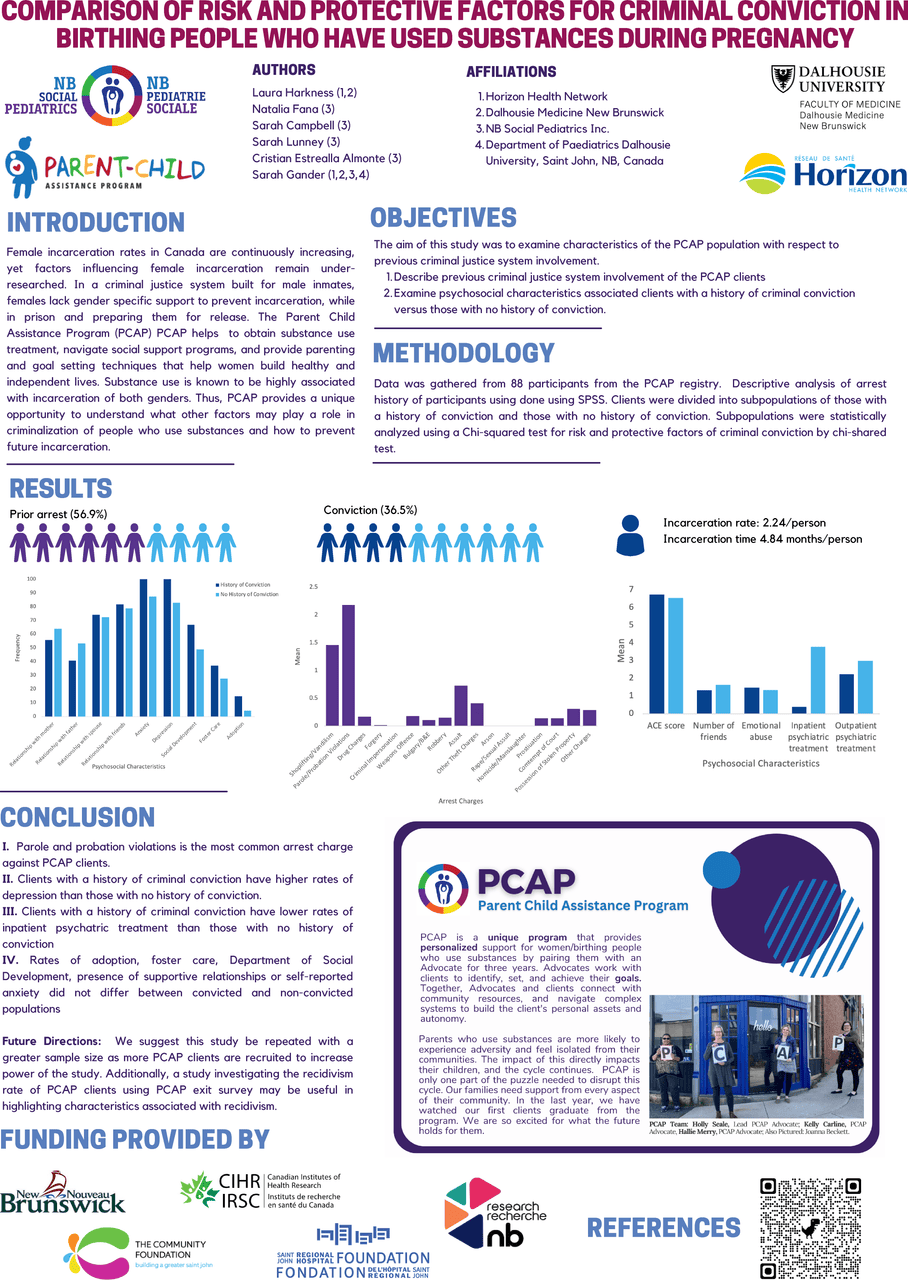Abstract
Introduction
Female incarceration rates in Canada are continuously increasing, yet factors influencing female incarceration remain under-researched. In a criminal justice system built for male inmates, females lack gender specific support to prevent incarceration, while in prison and preparing them for release. The Parent Child Assistance Program (PCAP) PCAP helps to obtain substance use treatment, navigate social support programs, and provide parenting and goal setting techniques that help women build healthy and independent lives. Substance use is known to be highly associated with incarceration of both genders. Thus, PCAP provides a unique opportunity to understand what other factors may play a role in criminalization of people who use substances and how to prevent future incarceration.
Objectives
The aim of this study was to examine characteristics of the PCAP population with respect to previous criminal justice system involvement.
1.Describe previous criminal justice system involvement of the PCAP clients
2. Examine psychosocial characteristics associated clients with a history of criminal conviction versus those with no history of conviction.
Methodology
Data was gathered from 88 participants from the PCAP registry. Descriptive analysis of arrest history of participants using done using SPSS. Clients were divided into subpopulations of those with a history of conviction and those with no history of conviction. Subpopulations were statistically analyzed using a Chi-squared test for risk and protective factors of criminal conviction by chi-shared test.
Conclusion
I. Parole and probation violations is the most common arrest charge against PCAP clients.
II. Clients with a history of criminal conviction have higher rates of depression than those with no history of conviction.
III. Clients with a history of criminal conviction have lower rates of inpatient psychatric treatment than those with no history of conviction
IV. Rates of adoption, foster care, Department of Social Development, presence of supportive relationships or self-reported anxiety did not differ between convicted and non-convicted populations
Future Directions
We suggest this study be repeated with a greater sample size as more PCAP clients are recruited to increase power of the study. Additionally, a study investigating the recidivism rate of PCAP clients using PCAP exit survey may be useful in highlighting characteristics associated with recidivism.






